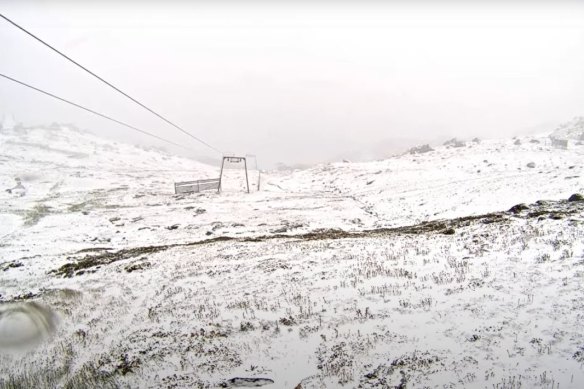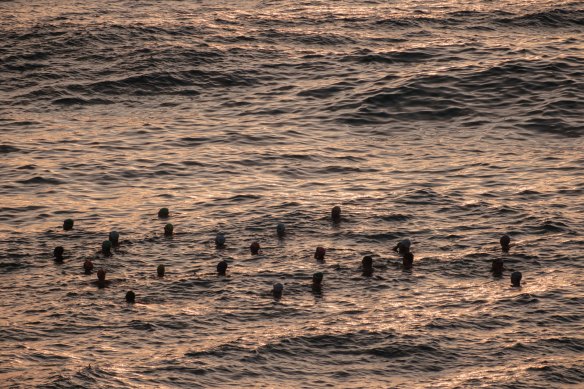
NSW is a land of weather extremes on Friday: snow is blanketing the Alps, while much of the state’s coast is bathing in 30 degree-plus conditions ahead of a scorching weekend.
Meanwhile, Brisbane is among the most humid cities on earth, and hail is hitting Melbourne with a cold snap from Antarctica.

The Thredbo weather cam shows fresh snowfall on Friday morning.Credit:Thredbo
Sydney is set to reach 31 degrees on Friday with slight winds and a near-zero chance of rain, reflecting a hot and humid trough that’s moving down from Queensland.
“The heat in south-east Queensland and north-east NSW has high humidity,” said James Rouse from Weatherzone. “[It’s] making for very warm mornings and it’s making it feel hotter than it is.”
But further south, in Thredbo, snow is falling as the south-east of the state experiences an Antarctic-driven cold snap resulting in temperatures “very cold for this time of year”, Rouse said.
“The air on the surface is not from Antarctica, but the air five or six kilometres above the ground is,” he said. “It’s producing strong winds that make it feel several degrees colder, along with thunderstorms and showers [making it feel even colder].”

These swimmers at Bondi Beach were cool, calm and collected as they started yesterday soaking in the early morning rays of the sun on Thursday.Credit:Oscar Colman
The stark contrast in extremes is being driven by two competing weather systems – the trough over the north-east and the low coming from Antarctica – as well as the impact of geography. Colder air moving from the west falls as it heads over the Great Dividing Range, which heats the air as it moves further to the coast.
It results in the odd outcome that some towns on the western side of the range are relatively cooler than those on the eastern side.









 Add Category
Add Category